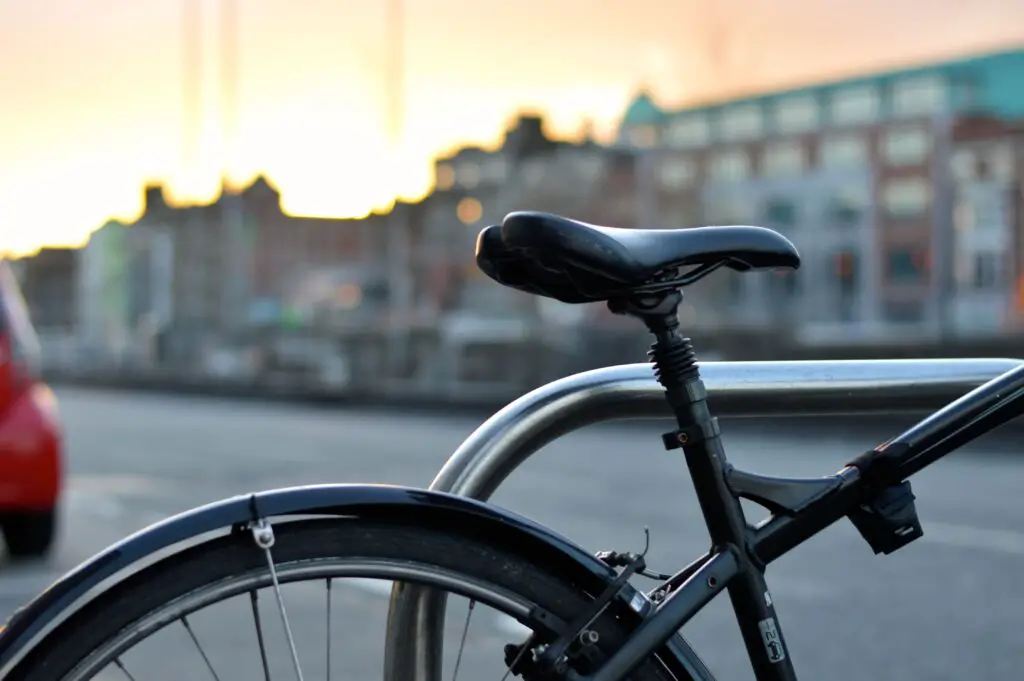Contents
How To Transport A Bike Without A Rack – IIntroduction
The challenge arises when it comes to transporting your bike without a dedicated rack. While bike racks offer a convenient solution, there are various creative and practical methods to transport your bike without one. In this article, we will delve deeper into alternative solutions, providing comprehensive tips and tricks for safely and securely transporting your bicycle, whether you’re heading to the mountains, trails, or simply commuting across town.
1. Inside the Vehicle:
Fold Down Seats:
For smaller vehicles, folding down the rear seats can create enough space to accommodate a bicycle. Remove the front wheel for a more compact fit. Use blankets or padding to protect both your bike and the interior of the car. This method is not only space-efficient but also ensures that your bike is shielded from potential damage during transit.
Remove the Front Wheel:
Detaching the front wheel can significantly reduce the space your bike occupies inside the vehicle. This method is particularly useful for hatchbacks or sedans with limited trunk space. Consider investing in a front-wheel removal tool for added convenience.
2. DIY Roof Mount:
Pool Noodles and Straps:
Create a makeshift roof mount using pool noodles and sturdy straps. Place the pool noodles on the roof and secure the bike by attaching the frame to the noodles with the straps. Ensure the bike is firmly in place before hitting the road. This DIY solution is cost-effective and can be adapted to different roof shapes.
Soft Roof Rack:
Soft roof racks are affordable and easy to install. These adjustable racks can be strapped directly onto the roof of your vehicle, providing a stable platform for your bike. Make sure to follow the manufacturer’s guidelines for secure installation. Soft roof racks are not only versatile but also a great option for occasional use, offering a balance between cost and functionality.
3. Trunk Mounts:
Trunk Mount Bike Carrier:
Invest in a trunk mount bike carrier that straps onto the back of your vehicle. These carriers are easy to install and remove, making them a convenient solution for occasional use. Ensure proper attachment and stability before driving. Trunk mount carriers are available for various vehicle types and are a popular choice for those who seek a portable and user-friendly option.
4. Tie-Downs and Towels:
Using Towels or Blankets: Lay down towels or blankets on the rear seats or in the trunk to protect the interior. Carefully position the bike and use sturdy tie-downs or bungee cords to secure it in place. This method not only safeguards your vehicle’s interior but also prevents scratches or damage to the bike during transit.
Utilize Anchor Points:
In the absence of a bike rack, leverage anchor points within the vehicle. Secure the bike by attaching straps or bungee cords to these anchor points, ensuring a stable and safe transport. This method is adaptable and allows for a customizable setup based on the interior features of your vehicle.
5. Inside an SUV or Van:
Utilize Cargo Space:
If you own an SUV or van, take advantage of the spacious cargo area. Remove or fold down seats, and position the bike with care, ensuring it’s stable and won’t shift during transit. This method is ideal for those with larger vehicles, providing ample space for multiple bikes or additional gear.
Secure with Straps or Bungee Cords:
Use straps or bungee cords to secure the bike in place. Make sure it’s not in direct contact with the vehicle’s interior to prevent scratches or damage. Utilizing cargo space in an SUV or van offers versatility and is suitable for transporting bikes for group rides or family outings.
While bike racks offer a convenient and purpose-built solution for transporting bicycles, there are various alternatives for those without a rack. Whether you’re driving a compact car, a sedan, or an SUV, creative thinking and resourcefulness can enable you to transport your bike safely. From utilizing interior space to DIY roof mounts, these methods provide flexibility for cyclists who don’t have access to traditional bike racks.
Remember to prioritize safety and stability when transporting your bike using alternative methods. Securely fasten the bike to prevent movement during transit, use protective padding, and double-check all attachments before hitting the road. By exploring these alternatives, you can unlock the freedom to take your bike wherever your adventurous spirit leads you, even without a dedicated bike rack. Whether you’re a weekend warrior or a daily commuter, these solutions ensure that your bike travels with you safely and securely, ready for the next cycling adventure.
Conclusion:
In the pursuit of two-wheeled adventures, the absence of a dedicated bike rack should not hinder your ability to explore new trails or commute with your bicycle. The diverse array of alternative solutions discussed in this article showcases the ingenuity and resourcefulness of cyclists determined to transport their bikes safely and securely.
From folding down seats in smaller vehicles to crafting DIY roof mounts using pool noodles and straps, cyclists have a range of creative options at their disposal. Trunk mounts, tie-downs with towels, and utilizing cargo space in larger vehicles further demonstrate that a lack of a traditional bike rack doesn’t mean sacrificing convenience or safety.
As you choose the method that suits your vehicle and biking needs, always prioritize safety. Secure attachments, protective padding, and regular checks ensure that your bike not only arrives at its destination unscathed but is also ready for the next exhilarating ride.
Ultimately, the freedom to transport your bike without a rack opens up a world of possibilities, allowing you to seamlessly integrate cycling into your lifestyle. Whether you’re a dedicated off-road enthusiast, a casual rider, or someone using a bike for daily commuting, these alternative solutions empower you to bring your bicycle along on your journeys, contributing to a more dynamic and adventurous lifestyle.
So, whether you find yourself navigating city streets, heading to the mountains, or embarking on a cross-country road trip, these ingenious methods ensure that your trusty two-wheeled companion is always by your side, ready to roll into the next cycling escapade.





